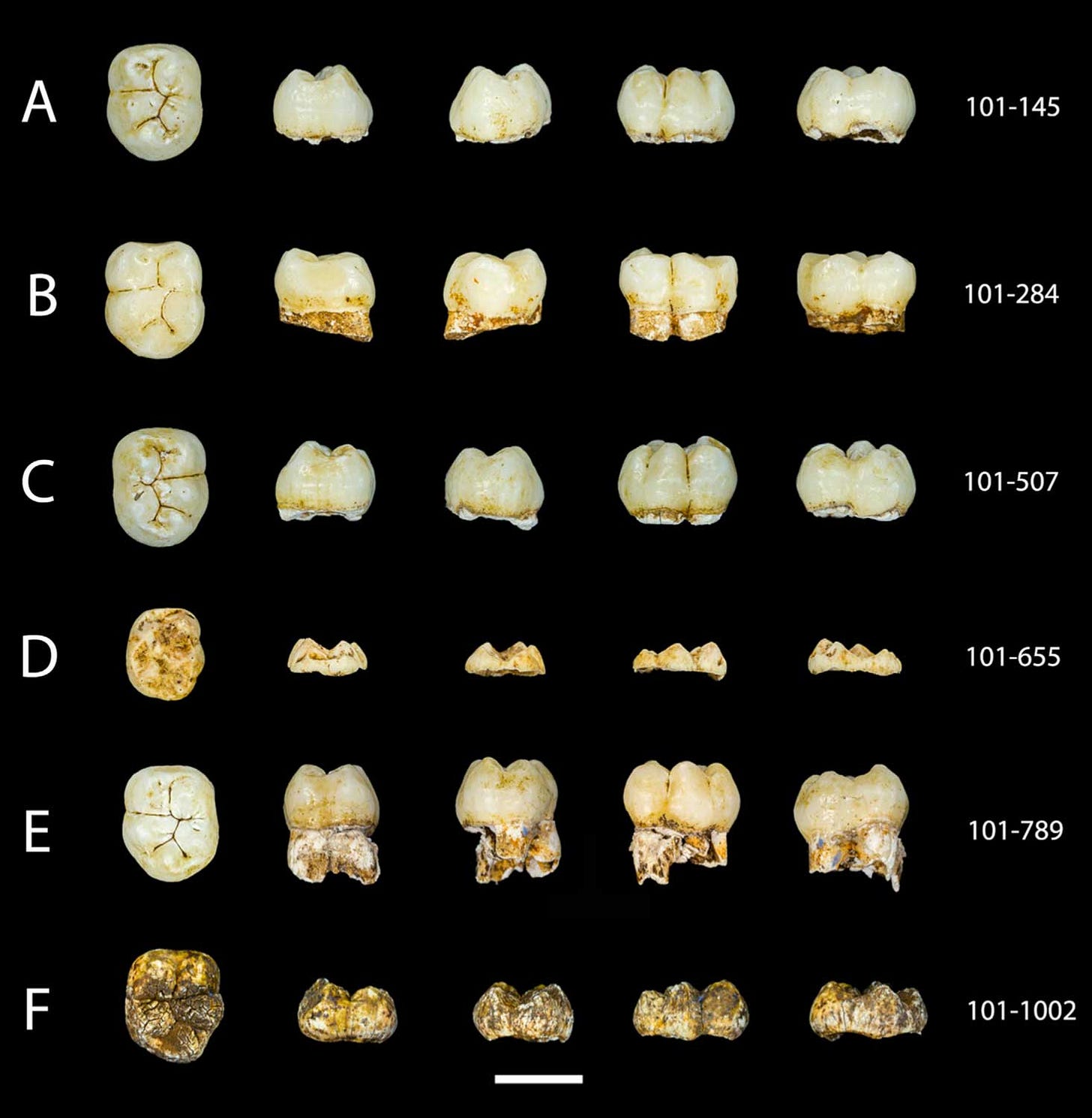Research highlight: Homo naledi teeth
In a massive new paper, a team led by Lucas Delezene provides descriptions of the dental evidence from the Dinaledi Chamber.
Citation: Delezene, L. K., Skinner, M. M., Bailey, S. E., Brophy, J. K., Elliott, M. C., Gurtov, A., Irish, J. D., Moggi-Cecchi, J., de Ruiter, D. J., Hawks, J., & Berger, L. R. (2023). Descriptive catalog of Homo naledi dental remains from the 2013 to 2015 excavations of the Dinaledi Chamber, site U.W. 101, within the Rising Star cave system, South Africa. Journal of Human Evolution, 180, 103372. https://doi.org/10.1016/j.jhevol.2023.103372
It has now been nearly 10 years since our team first explored the remote Dinaledi Chamber of the Rising Star cave system. Eight years ago we published the diagnosis of the new species, Homo naledi, based on the large sample of skeletal remains from our first excavation work in the chamber. Since that time, the team has published more than a thousand pages of research on various aspects of the anatomy of H. naledi, including detailed descriptions of all the parts of the skeleton.
Except for the teeth. Of course, dental evidence was extremely important to the diagnosis of H. naledi and as a result we published a detailed composite description of the anatomy long ago. The material from the Lesedi Chamber, and the Letimela individual from the U.W. 110 locality have also been fairly completely described. But we had never published a specimen-by-specimen description and accounting of more than 150 teeth from the Dinaledi Chamber.
That was a monumental job, undertaken by Lucas Delezene of the University of Arkansas, together with key contributions by Matthew Skinner and other collaborators. Their new research paper occupies seventy-nine journal pages with detailed information about every tooth, developing germ, and root in the fossil collection.
A lot of work had to go into this paper beyond the basics of dental anatomy, taking in the condition of each tooth and its possible association with other teeth in the collection. In some cases we can work out which teeth belong to the same individual, based on the traces of wear between the teeth, their anatomy, and other considerations.
I am extremely pleased to see this work published. I know that it will provide a strong foundation for future work on H. naledi biology, and it provides the essential data for integrating H. naledi teeth into other comparative studies of hominin dental morphology.



